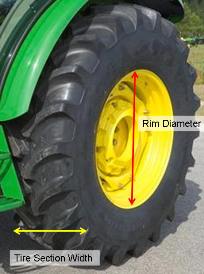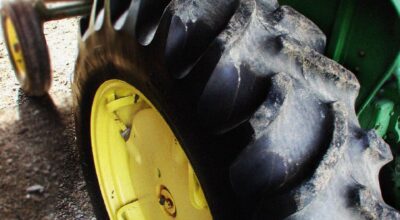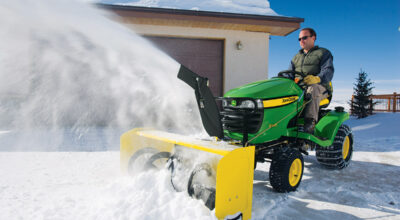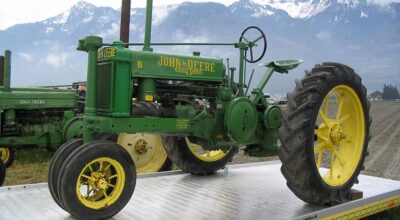You’ve already got the perfect John Deere tractor. It works like a charm and it efficiently powers through any task you put in front of it, but do you have the right John Deere tractor tires? We recommend considering the following components when choosing the right John Deere tractor tires for your farming needs.
Size: Manufacturers in the U.S. give tire sizes based on “designations” or “standards,” which measure tire size in inches and are broken down into a star-rating system. This system indicates the maximum pressure based on the tire size. For example, tractor tires with an 18.4 inch width and 30 inch diameter are given three stars and a maximum pressure of 30 psi.
Tread Type: In order to determine the proper tread pattern, you need to understand the conditions your tractors will be exposed to in the field:
- R1: The most common tread type used in agriculture across the U.S. and Canada is the R1 because of its good traction on dry-land farming.
- R1W and R2: The deeper tread patterns of the R1W and R2 are intended for wet and difficult soils.
- R3: For jobs that require minimal damage to ground conditions, such as turf or park mowing, the R3 offers a wide tire footprint to decrease compaction.
- R4: This tire tread falls somewhere between an R1 and R3, but with less depth than the R1 and better traction than the R3.
- F2: An F2 is a front tire that complements an R1 or R1W well; it is typically used in general farming conditions on 2WD tractors.
- F3: This front-tire industrial multiple rib steer tire works well with R4 rear tires and is normally found on 2WD tractors.
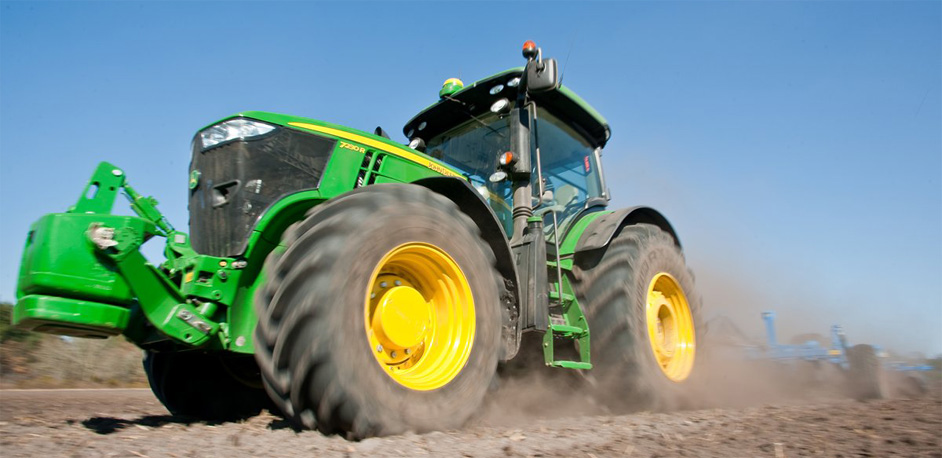
Load Rating: Load rating dictates the maximum weight a tractor’s tires can handle; this limiting factor makes the load rating index the most important criteria to understand. Overall load rating is determined by the axle, wheel, and tire load rating. The lowest load rating of the three marks the restriction of “pound carrying capacity.”
The size designation and maximum pressure of a John Deere tractor tire does not necessarily go hand-in-hand with its load rating; a small tire and a large tire could both have a three-star destination, but different load ratings.
Bias or Radial Construction:
- Bias tires are preferred for utility tractors that are operated for a low number of annual hours and do not perform major tillage operations.
- Radial tires have a large footprint that give them more traction than a bias tire, making them the preferred tire for wet and muddy field conditions or tillage operations. The heavy construction of radial tires makes them well suited for operating on pavement.
Tube or Tubeless:
- Tube tires are equipped with interior tubing that distributes water without touching the tire rim and creating rust.
- Tubeless tires are hollow inside and tend to last longer than a tubed tire. There is less maintenance required with a tubeless tire because it does not need to be disassembled for repairs.
Finding the right tires for your tractor affects the tractor’s performance and ultimately the job you need it to accomplish. It’s important to educate yourself about the type of John Deere tractor tire that is best suited for the conditions it will be exposed to in order to see optimal results.
If you enjoyed this post, check out more like it on our Facebook page!

